How to fix Sonic the Hedgehog
By mattbodega 27 Comments
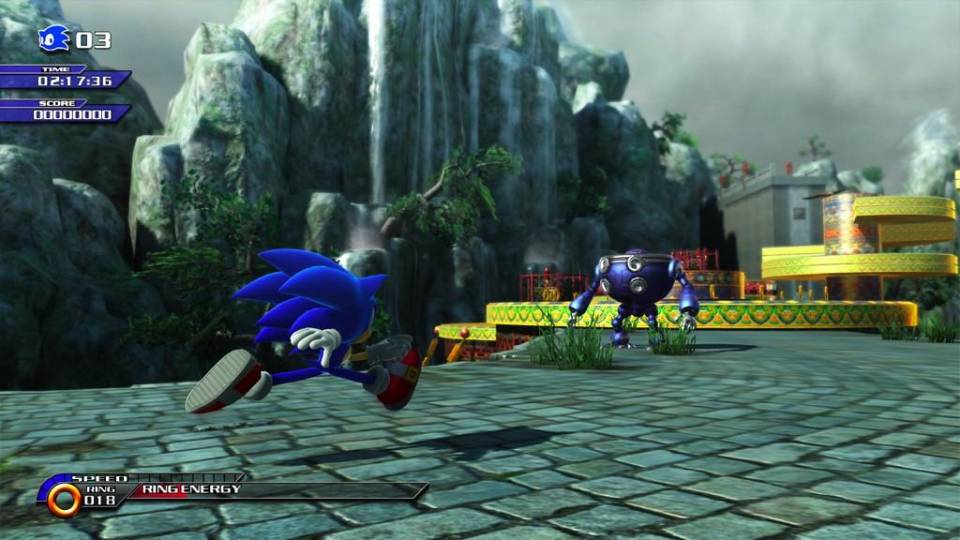
When I think of the the possibility of ANOTHER Sonic game(especially given the quality of the previous games), I can’t help but be reminded of an old adage my mum used to whisper to me just before I would drift off to sleep.
“Son”, she would say, “You can’t strike lightning twice…especially when it comes to franchises that haven’t been good since the early 90’s”
(True Story!)
Its hard to believe that the last important release in the Sonic the Hedgehog franchise was released more than 10 years ago. All those poor Genesis lovers plugging together their copies of Sonic 3 and Sonic and Knuckles. Did they know, even then, that poor Sonic would never again be associated with “fun”? Oh, the humanity! Oh, the copies of Sonic 3D Blast!
What happened to the poor Bastard? Why has Sega been dragging Sonic’s name through the mud all this time? Why can’t they conjure that magic that made Sega a force to be reckoned with?
Some game players( those who still remember the hay-day of Sonic games and could be bothered to give a care about) think that Sonic:Unleashed might be a return to form for the franchise, putting Sonic in a game that more closely resembles the 2D side-scrollers that made him Nintendo’s worst enemy all those years ago. Fans think that a healthy dose of nostalgia for “th good ol’ days” might be exactly what Sonic needs. Sonic fans, deluded by a gamers greatest weakness (nostalgia),bought copies of Sonic Adventure 1 and 2, Sonic Heroes, Shadow the Hedgehog, and the “re-imagined” Sonic the Hedgehog.
If you were to put those titles on a list, then congratulations: you’ve managed to create an in-depth and sophisticated feature about the worst 3-D platformers ever created.
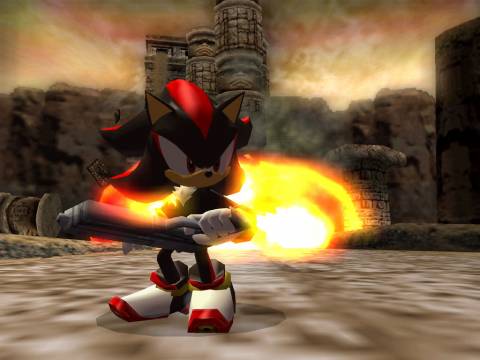
Bad camera, boring level design, anime voice acting, a story: looking at the “features” those games brought to bear, its no surprise that some game players wants Sonic to go back to his roots: old school side scrolling platformer.
They couldn’t be further for the truth.
Nostalgia is a dangerous weapon: by conjuring up the aforementioned “good ol’ days” in a new product, game makers con the average “Joe Gamer” into thinking their having fun. However, if developers continue to give players nostalgia trips rather than new experiences, the series is bound to fall into a rut. Going back to the “fun years” of 2-D gaming certainly won’t bring Sonic back. Much like the Sonic Rush games (the only halfway decent entries the series has seen in a while) a “new” old Sonic game will only be enjoyable, as Giant Bomb’s Jeff Gerstmann wisely puts it, “in a retro sense”; it might be a neat distraction, but it couldn’t possibly stand toe to toe with faster, more interesting modern games. It wouldn't compete with the faster games, and couldn't be counted toe-to-toe with the better platformers. In a no man's land where the series can't please the modern sensibilities of gamers, the franchise would lose interest even from the most die hard fans, and Sonic would be no more.
That puts the Sonic franchise in a bit of a quagmire, doesn’t it? Continuing to make the terrible 3-D platformers will surely put a nail in the series’ coffin, while making a “new” 2-D platformer will regulate the franchise to a lifetime of smaller, less important releases.
I truly believe that the Sonic franchise is worth saving. Does the 90’s “EXTREME!!” appeal wear thin in this day and age? Hell yes it does. Has the Sonic franchise continually mocked and spited me since the 90’s? Sure has. And yet I AM nostalgic for those older games. I was shocked by how inventive the Sonic CD game was, with its simple-but-effective time travel mechanic, its excellent level design, and its awesome music. I remember having fun with the Sonic the Hedgehog games.
I assert that, at a certain point in the development of the more modern Sonic games(starting with Sonic Adventure), the design team made a decision that was instrumental in destroying everything that was great about Sonic. Most of all, I think I know how to fix it. I think I know what could bring the sound and the fury back to Sega’s premiere franchise.
A quick note before I begin: My main focus, in this article is going to be on the mechanical elements of the series(actually playing the game) and less in terms of the obvious stuff(like how every character created after Knuckles is totally and completely horrible, how Shadow the Hedgehog is the worst of anything ever, how the Sonic Adventure games don’t hold up, how Anime voice acting is dumb, how Sonic + Final Fantasy inspired graphics = horrible, and so on and so forth) .
Dilemma: Straight is Dumb
Its important to start this “If you love it, change it” entry by describing just how the Sonic series strayed down its path of nostalgia/ruin, and it’s impossible to talk about Sonic now(just as it was in the early 90’s) without mentioning the once and future king of the platformer: Mario.Sonic, as it is well publicized, was a character specifically designed to “beat” Mario at his own game; Sonic could walk the platformer walk, and it could talk the side-scrolling talk. Sure, Sonic was essentially the same type of game as the Mario platformers, but it was his signature aspect, the one thing Sonic had that Mario didn’t, that pushed the character into the realm of medium’s greatest characters.
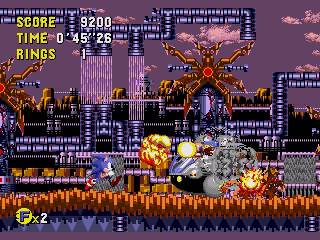
That’s right: his mad style.
NO! It was Sonic’s speed, and the speed of the Genesis’ “blast processing.” The phrase may have been a marketing term to describe the faster speed of the Genesis's processor( in comparison to the SNES) but it was this speed that cemented Sonic as the mascot of the 16-bit era.
Part of his success was that Sonic, and the various abilities he had, could be perfectly emulated within the design limitations of the 16-bit era; all Sonic had to do was move to the right, and move fast. No worries! There was no “bad camera” and no “difficult control” that made Sonic difficult to handle. Essentially, the platformer, as a genre of gaming, was advanced enough at the time to handle the Sonic Boom (Sonic Boom! Sonic Boom!)
All a platformer had to do, at the time, had to do was create a level. Each level was, effectively, a straight line. The camera focused on Sonic as he moved to the right(and on occasion, to the left). Moving in a straight line at high speeds was totally within the capacity of game machines at the time.
It’s the advent of 3-D graphics that present Sonic, and(at the time) the platforming genre with its biggest challenge. Now games, so used to only dealing with the X and Y axis, have to come to grips with a mischievous little axis known only as..... Z. With the ability of modern machines to create full virtual worlds, game designers now had to account for a character’s(and a players’s) ability to deal with 3-D environments.
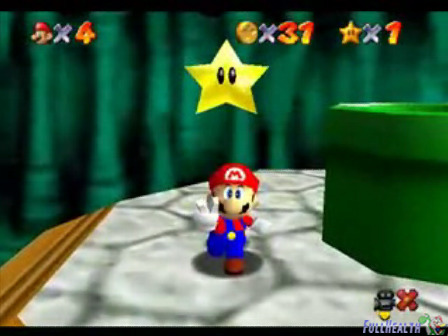
The original 3-D platformer(for all intents and purposes), Mario 64 can be credited for all number of important innovations, ranging from it pioneered “camera” system that allowed players to change the angle being displayed around the character, to its impressive 3-D graphics. For the purposes of this entry(and for poor Sonic) the key element I’d like to focus on is Mario 64’s approach to level design. Essentially, Mario 64 took the standard straight line levels that characterized 8 and 16-bit gaming and turned them into 3D: a level that was once a straight line was now a box. The result of this design choice was environments larger than any that had been seen in previous games. Mario had multiple objectives( the Stars he was supposed to collect) in every level, and by widening the straight line levels into boxes, Mario had plenty of unique, different places to explorer.
THIS is the blueprint for the modern 3-D platformer (and really, for 3-D games in general). Designers turned their straight line levels and made them 3-D boxes. With the camera situated above the box looking down at the character( or inside the box looking at the character), 3-D games could now be created and navigated. They could still have the tight controls and the excellent level designs of the older 2-D platformers.
Somehow, the folks at Sonic Team didn’t get the message.
Sonic introduction into 3-D gaming( not counting the atrocious Sonic 3-D Blast which viewed the Sonic action from an isometric perspective that made the action incredibly slow, crippling any chance of Sonic displaying his trademark speed) comes in the form of Sonic Adventure for the Dreamcast. It is here that we to enter the shady, almost insidious world known as “That place where we insult the Dreamcast”
And we must, friends. Because Sonic Adventure is not a good game. It is a bad game in every way Super Mario 64 is a good game.
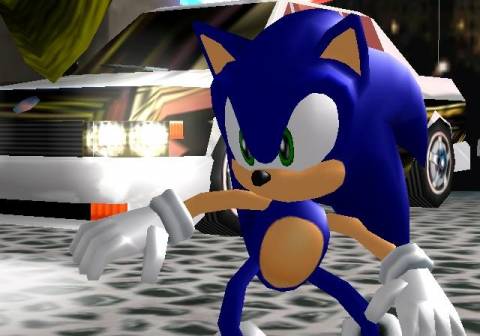
The designers at Sonic Team understood that, just as he did on the Genesis, Sonic was going to have to bring the ridiculous speed that made his games so successful. This time, however, that speed was going to have to translate into 3-D.
The focus of the game became to showcase the Sonic’s ludicrous speed, and, to show off that speed, Sonic Team decided, apparently, not to follow the status quo set by every other successful 3-D game ever created. Sonic Adventure did not feature Mario’s expansive levels, but, instead, featured the straight-line level designs that had made the older Sonic games so popular.
Levels in the 3-D Sonic games are long corridors. You can run really fast down them. Sometimes you turn. Occasionally you fight some enemies. These areas are, essentially, 3-D rectangles for Sonic to maneuver. Sonic had some small degree of movement inside the corridors themselves, but there was none of Mario’s explanation. The camera in these Sonic games insisted of staying behind Sonic, and the player watched mostly from behind as Sonic did his running.
So now, the level design for the 3-D sonic games consists of a long, mostly straight series of rectanglular hallways. The straight line level design of the old games hasn’t been expanded as it was in Mario 64, but rather, it was rotated: players (and Sonic) down into these rectangles. And then Sonic ran.
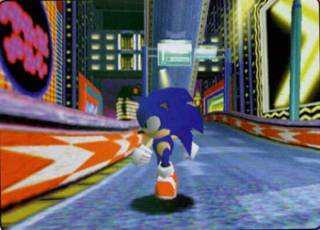
This is the downfall of every 3-D Sonic game.
You see, by opting to stay away from, you know, the modern advances of the platformer genre, Sonic Adventure features these long hallways. Forget the fact that the controls were far too touchy in the game, or that the camera never framed the action correctly, or that the story and extra characters were lame. Beyond all that periphery, the core of Sonic Adventure was a game that was so squarely designed to frame the speed and make Sonic seem fast that it neglected to create interesting level design. The few moments of interesting level design that would appear in the games couldn’t even be properly navigated, as the “looking into the rectangle” perspective made judging the distance of some jumps far more difficult than it should have been. Compared to the interesting tricks and traps of Mario 64, Sonic 3-D rectangles, while graphically impressive at the time, do nothing to hide now the fact that the game is about as interesting as a Saltine( and far less practical)
Sonic Adventure’s approach to 3-D game play made the entire game boring.
Perhaps what’s worse about all this is that game players should have known, going in, that this was boring.
Because this game had been made and played before.
Years before Sonic Adventure and the 3-D Sonic platformers,Game players have already taken a mascot through straight 3-D rectangles with a minimum of interesting things to see or do.
That’s right, the game that Sonic Adventure(and all 3-D Sonic games) most closely resemble is not the masterpiece Mario 64.
It's Crash Bandicoot.
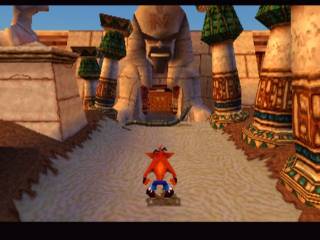
Yes, the bizarre “mascot” of the Playstation featured almost the exact same design philosophy as Sonic adventure. Members of the design team have admitted that Crash’s straight line levels in 3-D rectangles was designed to be, effectively, a cop-out: a way to make the Crash series seem like a 3-D platformer in a world where game designers did not yet understand how to make a 3-D platformer.
If Super Mario 64 was the genuine article, and Crash Bandicoot was the cop out, Sonic Adventure is the rip-off of the cop out. In fact, Crash Bandicoot's better controls and less fussy camera make his outing a better game than Sonic Adventure
YOU HEARD IT HEAR FIRST: CRASH BANDICOOT IS BETTER THAN SONIC. FACT.
And that( finally) is the inherent design problem with the 3-D Sonic games. They’ve been ripping off the design concepts of outmoded platformers. Rather than fix the concept, Sega continued making the games worse and worse over time, until the release of Sonic the Hedgehog in the 360 and PS3, the most boring entry of the series to date. Without interesting level design(the lifeblood of a platformer) the modern Sonic games have been disasterbacles( a disaster and a debacle....duh.)
So now that we have outlined the actual problem with the 3-D entry’s in the Sonic franchise. You may have also guessed how I would change the games to make them better!
As you have no doubt surmised I have an incredible love and respect for Mario 64. I think (and, given how many 3-D platformers are similar to it, the industry agrees), that the way Mario 64 turns the straight line 2-D levels of older consoles and turns them into large, open 3-D boxes with plenty to explore represents the best way to move a 2-D concept into 3-D.
And that’s what needs to be done to Sonic the Hedgehog. The franchise doesn’t need to stay in 2-D. Rather, it finally needs to make the jump to a fully realized 3-D world
How to change Sonic the Hedgehog
1. Create an Open World environment for Sonic
Certainly the use of the term “open world” conjures up images of the free-roaming nature of Rockstar’s sublime GTA series. However, to make the most out of Sonic’s unique abilities, don’t think about GTA.
Think Crackdown. (or Burnout Paradise, in a pinch)
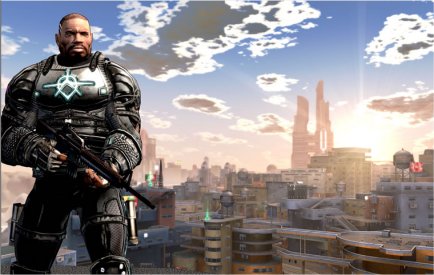
Put Sonic in a large, alive open world. Give him the ability to run though it at blazing speeds, to run directly up buildings, sideways across buildings. Give him a powerful jump to leap from the tops of buildings. Fill the environment with tons of various tasks for Sonic( he could be helping people in a city, or helping someone fight Robotnik, as an example.) Give Sonic plenty of objectives in the environment, as well as plenty of rewards for exploring around the environment. Don’t limit exploration to a city environment: create a whole world, with open world desert levels and open world ice worlds, etc. Give Sonic easy ways to redirect momentum and to regain speed after hard turns. There are so many directions you can go by putting Sonic in an open world game(more so than by keeping him in a 2-D platformer or a terrible 3-D platformer)
A large open world would offer Sonic an excellent environment to showcase his blazing speed, while also giving him enough unique/ridiculous environmental design to keep the actual experience of moving in the world fast and fun.
The key here is to make Sonic simply fun to control, and put him in an environment that takes advantage of the fun.
Every other good idea you could add to the Sonic franchise is essentially an extension of this first change. For example
2. Give Sonic moving baddies to fight
While its always fun to see the weird machines the Robotnik creates at the end of the levels in the 2-D Sonic games, most of the boss fights in the game aren’t very interesting; you would just jump on their weak spot until they’d explode. The BIG difference cam from Boss fights against any kind of fast moving enemies (think the race against Metal Sonic in Sonic CD, or Knuckles fight with the first boss in Sonic and Knuckles). In a new game, provide Sonic plenty of baddies for him to chase or be chased by, as these provide the most interesting encounters. Put them in a Open World environment with interesting level designs, and set up enemy encounters that interact or lead players to the awesome level design, anf you have a terrific fight encounter.
3. It’s not necessary to keep Sonic linear
At this point, Sonic doesn’t necessarily need to move linearly from level to level as in previous Sonic games, nor does he need to take one single path to the end of the level. Give the player a huge number of ways to “complete” an area(hopefully by completing tons of tasks) and offer the player different rewards/treats for exploring these different paths.
4. Make Sonic’s environment seem natural
Sonic world often features bizarre loop-di-loops , random underground tunnels, and a whole host of other bizarre physical obstacles. The challenge of a new game in this style would be to incorporate all of those bizarre landscapes into an environment. When an environment in a game seems to be natural –that is, it doesn’t feel like it was “created” by a “level designer” but has always existed- the player becomes more attached to the world, and can allow the player to have more fun than if placed in an extremely obvious an artificial environment. Games like Assassins Creed and the Naruto game on the 360 both featured extremely “natural” environments that enhanced the believability of these ridiculous games. Making that work for a Sonic game is certainly a tricky proposition, but a successful one will be remembered as one of the greatest areas ever designed for the franchise.
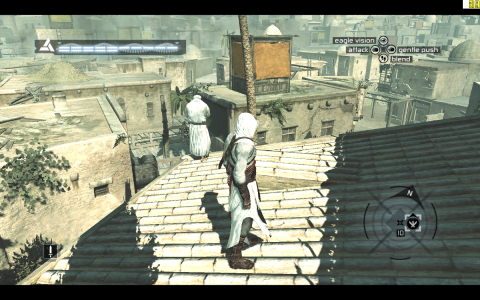
5. Nostalgia should be subtle.
Yes, I know I spent the beginning of this blog post( God, that must have been 4 hours ago at this point) that nostalgia can ruin games and bamboozle players into thinking that they are having fun. However, a few clever references to older games/characters can provide players with the sensation that the game makers do, in fact, love the previous game in the franchise. When a game beats you over the head with nostalgia(Super Smash Bros. Melee) it ceases to feel genuine, especially when it doesn’t hide problems with the gameplay. Just a few references to Sonic’s past efforts or other adventures can remind players that this game was developed by people who LOVE games.
6. Fix the controls
Here we’re getting into the obvious stuff, but this new open world Sonic game would not be able to function with the old 3-D platformers control scheme. Put in a camera that actually works. Give Sonic more responsive controls especially for movement. Let Sonic navigate areas without forcing the player to destroy a game controller in rage and disgust.
7. Give Sonic some more subtle abilities
This is an idea I've been toying with in my mind since I remembered how good Starbreeze's
"The Chronicles of Riddick" game was. One of that game's most notable achievements was creating a very subtle way to let the player know that he was sufficiently hidden in the dark: the screen would be tinted purple. It was an extremely minimalistic choice that worked beautifully.
So why not apply it to an open world Sonic game? As Sonic is coming up to a 90 degree turn, slowly tint the screen a color(blue for example!). When the screen is tinted as much as the developers intended, offer the player some sequence of buttons to make the sharp turn.
When Sonic is coming up to a jump, slowly tint the screen a different color(let's say green!).Increase the tint's color untill, when it reaches the developers logical limit, the player is at the point where they need to jump. this saves the player from spending too much time spinning the camera to look for upcomming turns and jumps, while also keeping Sonic moving. This could be applied to any aspect of the game!
7. Get rid of anime voice acting
Hell, keep the characters from speaking all together. That’d be just fine too.
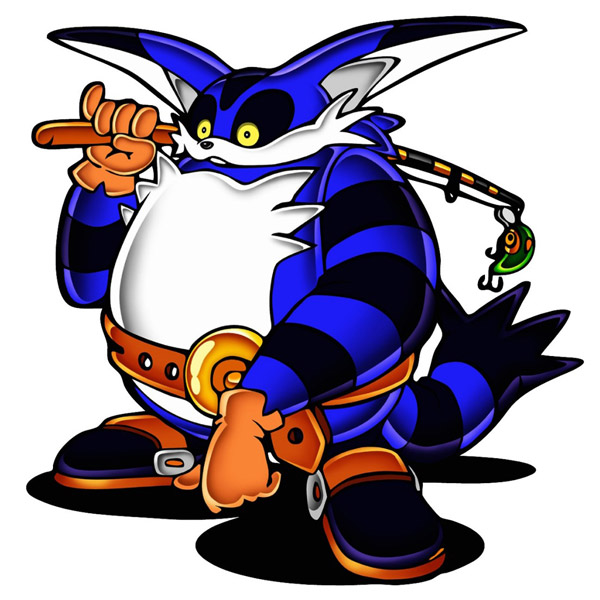
8. Ditch the ludicrous, extraneous characters
Sonic, Tails,, Robotnik, Knuckles. That's it.
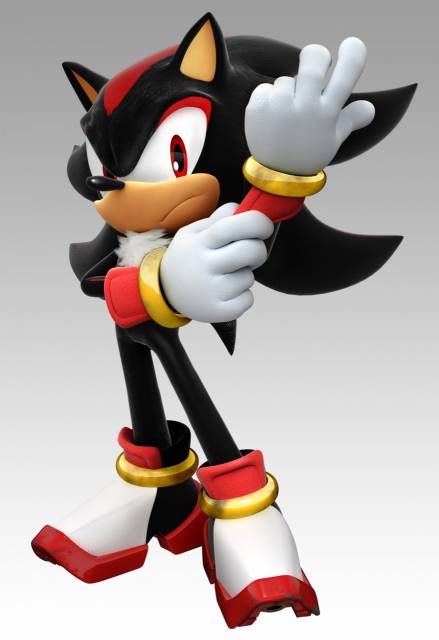
There are certainly other little design choices and changes I could make to the Sonic franchise, and some of the design changes are pretty obvious but the most important change I wanted to illustrate was the shift from the fake 3-D of the new Sonic platformers to actual 3-D. this is the most radical change that could be made to the franchise, but it would ultimately provide so many opportunities for the design team to get creative, and to finally put out a Sonic game worthy, not just of its legacy, but of this ridiculous blog entry.
